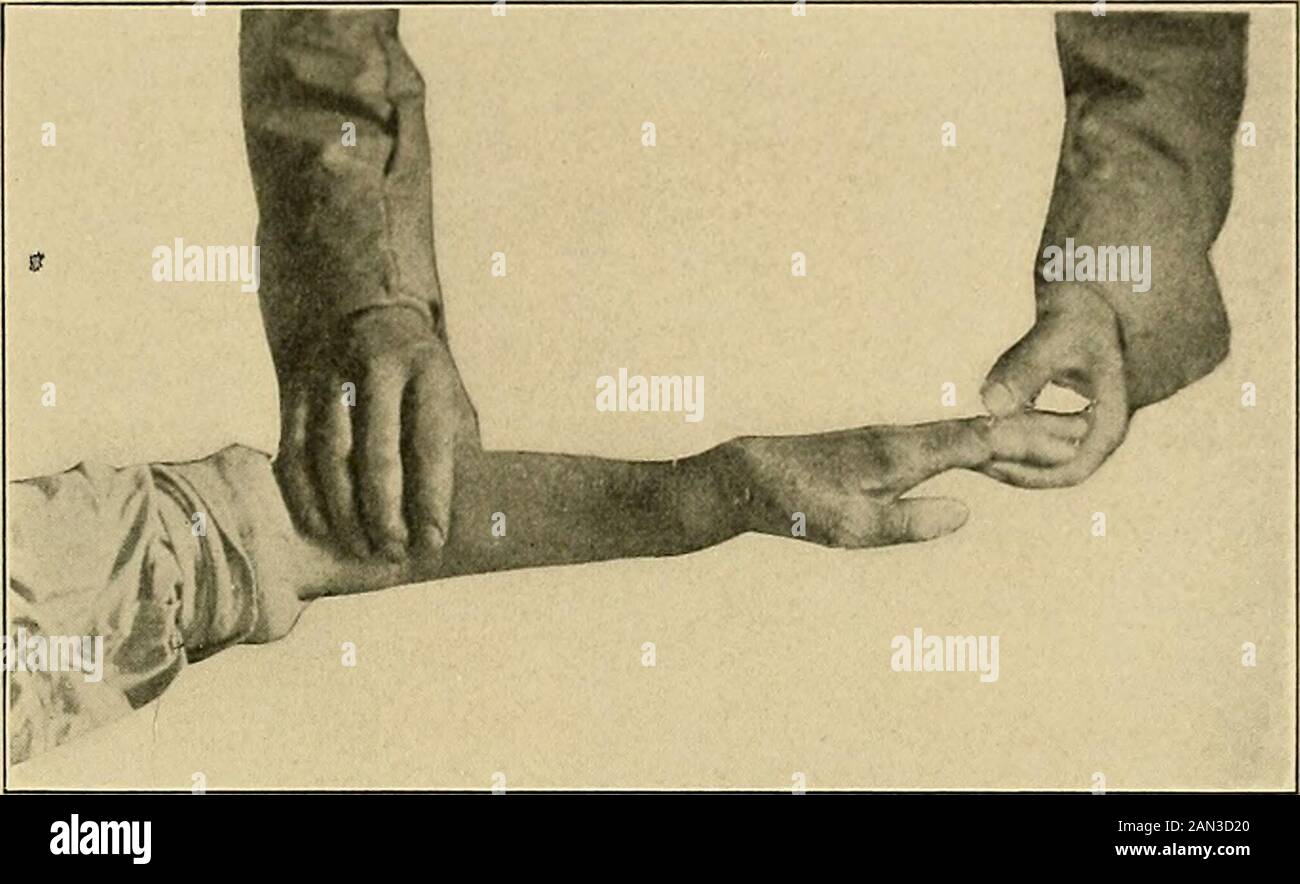The treatment of fractures . Fig. 285.—Colles fracture: the common silver-fork deformity. Note dorsal and palmarprominences (diagram). radius is found to be a little lower (nearer the hand) than the tipof the styloid process of the ulna. To ascertain the relative posi-tion of the styloid processes, the injured wrist should be graspedby the two hands and the styloids felt by the tips of the fore-fingers. The styloid process of the radius and the shaft imme-diately above it should be carefully palpated to determine theextreme thinness of the bone above the thick styloid process(see Fig. 283). Th

Image details
Contributor:
The Reading Room / Alamy Stock PhotoImage ID:
2AN3D20File size:
7.2 MB (234.2 KB Compressed download)Releases:
Model - no | Property - noDo I need a release?Dimensions:
2022 x 1236 px | 34.2 x 20.9 cm | 13.5 x 8.2 inches | 150dpiMore information:
This image is a public domain image, which means either that copyright has expired in the image or the copyright holder has waived their copyright. Alamy charges you a fee for access to the high resolution copy of the image.
This image could have imperfections as it’s either historical or reportage.
The treatment of fractures . Fig. 285.—Colles fracture: the common silver-fork deformity. Note dorsal and palmarprominences (diagram). radius is found to be a little lower (nearer the hand) than the tipof the styloid process of the ulna. To ascertain the relative posi-tion of the styloid processes, the injured wrist should be graspedby the two hands and the styloids felt by the tips of the fore-fingers. The styloid process of the radius and the shaft imme-diately above it should be carefully palpated to determine theextreme thinness of the bone above the thick styloid process(see Fig. 283). The width of the wrist between the styloid pro- COLI.FS FRACTURE ANATOMY 2 2 I cesses should be measured by means of a tape, or, better, by apair of calipers. The movements of the normal wrist and forearm should becarefully observed. Pronation and supination of the forearm. Fig. 286.—Colles fracture. Characteristic appearance. Note backward displacement of thehand and wrist. Palmar prominence. Compare with figure 285.